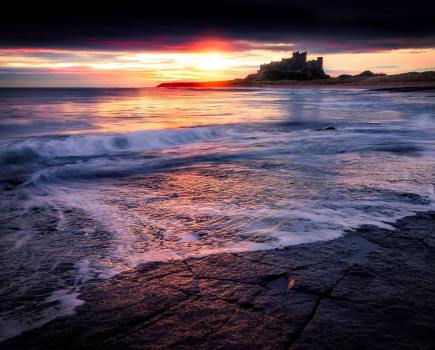Jason Taylor has written the first comprehensive British guide to inflatable boats for adventure travel. Packrafter David Lintern takes a look.
Packrafting is part of a renewed and blossoming interest in watersports in Britain – everything from SUP to taking a quick, refreshing dip after a long walk. The ability to stow these boats in a rucksack and hike overland before crossing the next body of water makes them directly relevant to us as walkers. With one of these robust, blow up boats, water is no longer an obstacle, but a part of the journey.
Main image: Packrafting in the Fisherfield ©David Lintern
Packrafting – a UK manual isn’t a place-based guidebook, but a comprehensive ‘how to’. It covers equipment, first journeys on the water, planning, and techniques. Author Jason Taylor runs what are now probably the most established packrafting courses for British boaters, based in north Wales, and as such is well qualified to guide us through the often-bewildering jargon and skillsets needed to keep safe and comfortable on the water. I’ve attended one of his first aid/responder courses in the past, and there’s no doubt he has a wealth of practical experience to share.
I can’t go any further in this review without referring to another book – The Packrafting Handbook – which predates Jason’s book by 2 years and is written by an Alaskan, Luc Mehl. As a student of this emergent activity, I’m fascinated by the similarities and differences in each book and think they make great partners. Largely due to differences in topography, the Alaskan Handbook focuses on river technique and safety, where the British Manual focuses on open water. Both books include both areas of interest, but the British manual rightly goes into more detail on how to manage big, open bodies of water, including using a packraft sail. We have a lot of lakes, lochs and coastline to explore.

Packrafters relax on a calm section of the River Findhorn ©David Lintern
The British manual caters for a wide range of paddlers, too, reflecting the broad user base in this country. The sections on campcraft, expedition planning, paddling with kids and with dogs are a particularly welcome resource, especially because things can easily get complicated (and out of control!) as we ‘bolt on’ use of the boats to our other outdoor interests. The British manual has another advantage for us in that the examples and story-based lessons used throughout the book are regionally relevant.
To my mind, the British book is perhaps less strong in terms of design. The Alaskan book is partly illustrated by artist Susan Glaser, which both simplifies some of the more technical or instructional aspects of the material and adds a splash of fun and colour. It also features bolder typeface and a roomier layout. Design and presentation matters because translating 3D movement into 2D descriptions is highly challenging… and there’s a risk of information overload. This is a pedagogic point that I hope both authors will appreciate. Water travel is risky, especially for beginners. We don’t want readers to switch off. Thankfully, both books have excellent indexes which help cut to the chase. This is especially useful in the British book – it’s very finely detailed, meaning you can look up specifics in less than 30 seconds.

I’ve been packrafting for over a decade and I still found much of interest in this new British Manual. The author is a personable guide, understands the various audiences and has a lifetime of journeying to draw on. I particularly enjoy that this is a reference for more experienced paddlers as well as an introduction for novices, including family groups – not an easy task. Packrafting – a UK manual is a valuable resource for British blow-up boaters, at whatever level, and highly recommended.
Packrafting – a UK manual is published by Pesda Press (paperback, £19.99)
When contributors to The Great Outdoors aren’t out walking, some like to relax with a good book. Read their outdoor book reviews and discover your next adventurous bedtime story.









